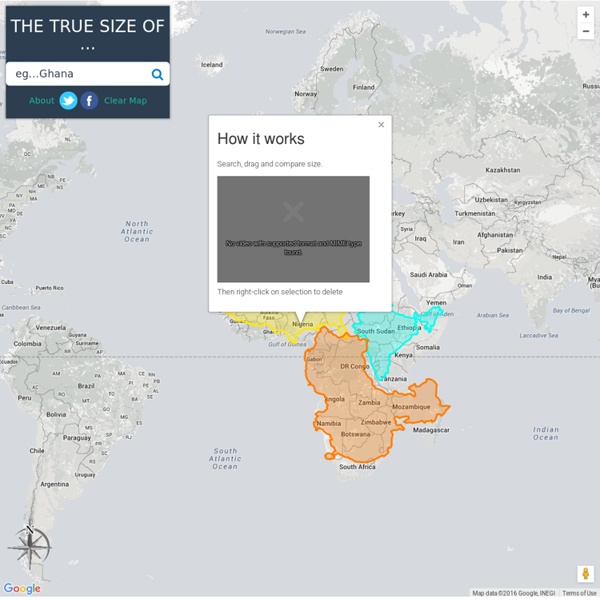



untitled Expectant mothers in the U.S. remain at a high risk for pregnancy-related death. (iStock) Around the globe, statistics show that as education levels for women rise, fertility levels drop. Sociologist Philip Cohen puts it this way: “Women with more education have more opportunities for productive lives doing work other than childbearing.” Sverige är unikt – här är 25 världskartor som visar hur Ibland pratar vi om Sverige som landet lagom, mellanmjölkens land, där allt är lite sådär mittemellan. Varken plus eller minus, vi är lite neutrala i allmänhet. Men tittar vi på Sverige i relation till resten av världen så kan man sluta sig till att inom vissa områden så är vi världens mest extrema land. Nedan finner du 25 stycken världskartor där Sverige är rankat etta eller ligger i toppen inom olika kategorier. 1.
'American Panorama' Is a Historical Atlas for the 21st Century When Charles Paullin’s Atlas of the Historical Geography of the United States first appeared in 1932, it was hailed as a “monument to historical scholarship.” Its 700 maps traced nearly every dimension of American life across the country’s geographical bounds—its natural history, its settlement by Europeans, the spread of railroads, state boundaries, suffrage, and much else. Paullin, a naval historian, hoped his meticulous research and beautiful renderings would inspire new research into history’s old narratives. 40 maps that explain the world By Max Fisher By Max Fisher August 12, 2013 Maps can be a remarkably powerful tool for understanding the world and how it works, but they show only what you ask them to. So when we saw a post sweeping the Web titled "40 maps they didn't teach you in school," one of which happens to be a WorldViews original, I thought we might be able to contribute our own collection. Some of these are pretty nerdy, but I think they're no less fascinating and easily understandable.
Map Men: teaching geography through comedy Mark Cooper-Jones and Jay Foreman tap into a rich vein of geographical quirks to teach through comedy ‘Maps are probably the best gateway into geography,’ argues comedian Mark Cooper-Jones. ‘They have become trendy, and cool. People are even putting them up on their walls.’
TerraClues TerraClues is the ultimate Google Maps scavenger hunt game! Follow clues to find hidden locations on the map Create your own hunts for others to play A fun game that makes you think! Add your own unique clues. Take people on a hunt around the world. Test your friends knowledge with world trivia. Planet Money Makes A T-Shirt Why A T-Shirt? We wanted to see the hidden world behind clothes sold in this country, so we decided to make a T-shirt. We wanted to make an ordinary shirt like the vast majority of the shirts sold in this country — not organic cotton, not hand-sewn in the United States. To figure out how many shirts to make, and to raise money to pay for them, we turned to Kickstarter. Our goal was to sell 2,000 shirts.
15 enkla exempel på GIS i undervisningen Geografiska informationssystem, så kallade GIS, är digitala kartor där information ligger i olika lager. I mitt förra inlägg beskrev jag lite mer ingående vad Lgr 11 säger om GIS i skolan. I det här inlägget tänkte jag gå in på några konkreta sätt att använda GIS i skolan på och vad de olika sätten kan tillföra lärandet. GIS för geografiska analyser GIS är mycket användbart när vi vill göra geografiska analyser.
Refugee Stories: Mapping a Crisis - The Choices Program Objectives Students will: Explore the human geography of the current refugee crisis.Employ data to create a map of the crisis.Examine one refugee’s story and use it to map his or her experiences.Consider challenges facing the international community and weigh responses to the crisis.
Tio topplistor du inte vill vara utan Att listor är populära på internet rådet det ingen tvekan om. Av någon anledning tilltalas vi av att få information färdigförpackad och gärna rangordnad. Jag har tidigare erkänt att jag gillar katter på internet, nu får jag lov att erkänna att jag gärna tittar på olika listor också. I detta inlägg får ni därför en liten hyllning till alla listor som florerar på internet och här har jag samlat tio listor som en geografilärare och SO-lärare verkligen kan ha nytta och glädje av. 1. Kartor
Historic Aerials: Viewer We admit it, websites can be confusing. Especially sites as unique as Historic Aerials. If you haven't worked any mapping websites, operation might not be obvious to you. To help you scale this short (we hope) learning curve, we have compiled this list of common tasks. We also encourage you to explore. Move the mouse around and try clicking on things. Gränslöst digitalt lärande Vad är GIS? En sak som förbryllade mig när Lgr 11 kom var hur jag skulle kunna undervisa om GIS, när jag inte hade en aning om vad det var. Det kommer ofta upp frågor rörande GIS i olika grupper som är kopplade till SO. Det kan vara nya lärare som får undervisa i geografi trots att de inte har någon utbildning, eller lärare med en äldre utbildning där GIS inte ingått. Jag tänkte göra ett försök att förklara vad GIS är och resonera lite om nyttan och nödvändigheten av att använda det i skolan. Det här inlägget är det första av två som handlar om GIS i skolan.
Westmont AP Human Geography - home Interactive map plots your address over 750 million years of Earth's history As recent volcanic events in both Hawaii and Guatemala have reminded us, our planet is alive and ever-changing. But while little shifts during the course of our short lives, the differences over hundreds of millions of years are nothing short of dramatic. A new interactive map created by Ian Webster, curator of the internet's largest dinosaur database, places our planet's ever-shifting surface into stark relief.